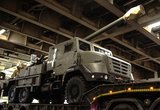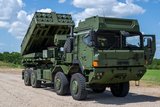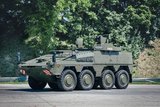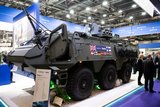US Army starts LTAMDS operational tests
Raytheon is working towards delivering the first six LTAMDS sensors by the end of 2022 as the US Army eyes declaring IOC late in FY2023. (Photo: Raytheon Missiles & Defense)
The US Army has been making progress in its effort to enhance its missile and air defence network and it has received the first Lower Tier Air and Missile Defense Sensor (LTAMDS), which is now being tested at the White Sands Missile Range in New Mexico.
Raytheon Missiles & Defense announced the delivery of the first of six radars on 10 May. This handover marks the beginning of a series of performance and functionality trials with the LTAMDS in an operational environment.
Designed specifically for the US Army’s lower-tier mission, LTAMDS is a 360° AESA radar with gallium nitride semiconductors
Already have an account? Log in
Want to keep reading this article?
More from Land Warfare
-
![Croatia orders Leopards and CAESAR howitzers as Lithuania orders more CAESARs]()
Croatia orders Leopards and CAESAR howitzers as Lithuania orders more CAESARs
The Leopard is becoming the tank of choice in central and eastern Europe as Croatia joins Lithuania, the Czech Republic and Hungary in ordering the platform. Lithuania and Croatia have also signed for CAESAR howitzers.
-
![Light Reconnaissance Strike – enabling a vital mission set (Studio)]()
Light Reconnaissance Strike – enabling a vital mission set (Studio)
A new system-of-systems concept will unlock digital integration of sensors and weapons for Light Forces, allowing them to shape the battlefield environment on their own terms and upgrade legacy platforms.
-
![Lockheed Martin to look further afield for GMARS rocket system opportunities]()
Lockheed Martin to look further afield for GMARS rocket system opportunities
The HX truck is already in use in many NATO and allied countries around the world as a logistics vehicle and carrier for high-value systems, including missile firing weapons, so its use for the Global Mobile Artillery Rocket System makes logistical sense.
-
![Beyond Survivability: How Active Protection Systems Are Empowering Commanders (Podcast)]()
Beyond Survivability: How Active Protection Systems Are Empowering Commanders (Podcast)
As threats diversify and intensify, APS are proving essential not just for vehicle protection but also for enhancing operational freedom, effectiveness and mission success in contested environments.
-
Medium knocked out of British Army LMP, with CAVS as heavyweight champion
As the British Army seeks to modernise and consolidate its diverse vehicle fleet, yet another change in direction is underway.
























